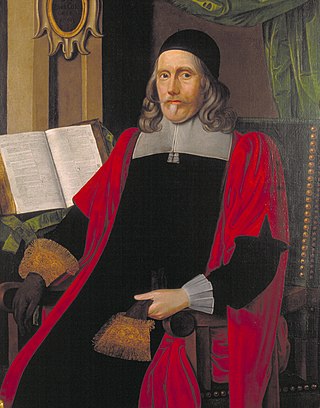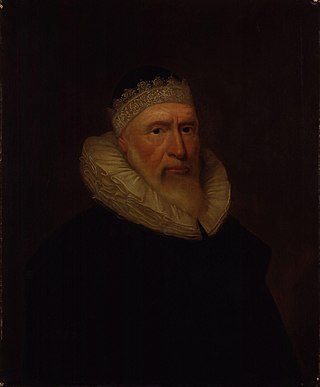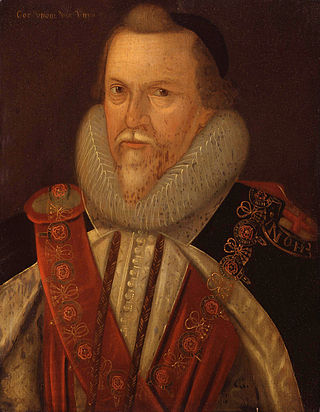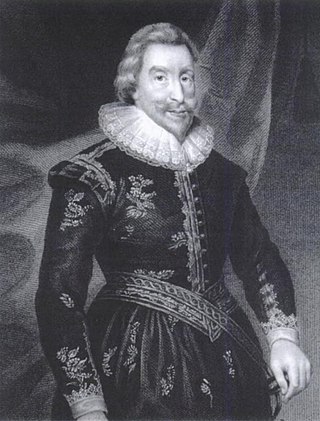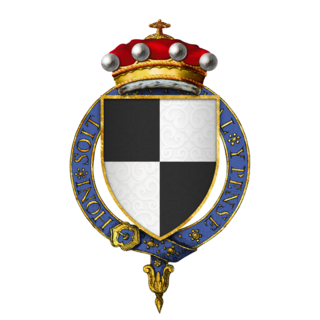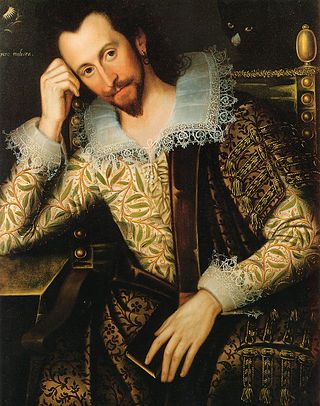Life


(Sutton House)
On 13 September 1601 "at the age of fifteen" she married Ralph Sadleir (1579 – 1661) of Standon, Hertfordshire, with a dowry of £3,000. [1] The marriage took place at Burghley House in Lincolnshire, where the bride's father, then Elizabeth I's Attorney General, "furnished the feast with all magnificence" and the "plate given by friends to the bride was above £800." [2] Ralph was the eldest son, and heir, of the wealthy landowner, Sir Thomas Sadleir (c. 1536 – 1607), lord of the manor of Standon, and his second wife, Gertrude, daughter of Robert Markham, of Cotham, Nottinghamshire. [3] Sir Henry Chauncy, writing thirty years after his death, says he delighted in hunting and hawking and the pleasures of country life; was famous for his noble table, his great hospitality to his neighbours, and his abundant charity to the poor. [4] Standon Lordship, the grand manor house where the couple lived after their marriage, was built for Ralph's grandfather, Sir Ralph Sadleir (1507–1587). [5]

An autograph poem about her early life appears in the smallest of her commonplace books (R.13.74):
"Hunting-field gave me Birth
Ellsing Education
Standon brought Affliction
Which made Heaven my Meditation"
These lines are thought by some to imply that her childless marriage was not a happy one. [1]
Her mother died in 1598 when she was thirteen and she was particularly close to her father. [1] He visited Anne in 1603 when James VI of Scotland stayed two nights at Standon on his way to London to claim the English throne. [6] He visited her again in 1616 following his dismissal from his post as Chief Justice of the King's Bench. [1] In 1622 he was imprisoned in the Tower of London and Anne was given leave to visit him as she was seen as a good influence on him. [7]
Ralph Sadleir died on 12 February 1661 and was buried in the parish church at Standon. [8] On his death the male line of the Sadleir family came to an end and the Standon estate passed to her "adopted deare son", Walter Aston (1609 – 1678) of Tixall, Staffordshire, son of Walter Aston, 1st Lord Aston of Forfar (1584–1639) and her late husband's sister, Gertrude. [1] [9] [10] Anne continued to live at Standon for the rest of her life. [1] On 16 April 1661 Walter wrote to console his "most deare mother": [11]
"Pray be merry, itt is the best Physick, and I trust in God I shall many and many a time be merry with you at Standon; and if at any time my presence shall be necessary lett me but receave the least notice of itt, and itt shall he obeyed, for I can bee with you in three days. My wife and all myne present desire their duty."
Sadleir owned a large number of books as well as illuminated manuscripts, coins and curiosities. [12] Several volumes of Sadleir's personal papers are held in the library of Trinity College, Cambridge, including religious and autobiographical meditations (MS R.13.74) and letters from leading Anglican divines and other correspondents (MS R.5.5). She was a royalist and a fervent adherent of the Church of England; she continued to use the prayer book despite its proscription during the English Civil War and engaged in "vigorous epistolary disputes" with her Roman Catholic nephew, Herbert Aston, and the New England puritan divine Roger Williams. [1] [13] She made substantial bequests to the libraries at Trinity College, Cambridge, and the Inner Temple, institutions attended by her father and by other members of her family. [1]
In 1649 and 1669 she presented Trinity with her letters and notebooks, her coins, and several illuminated manuscripts. [1] [14]
- Anne Sadleir, Collection of letters, drafts and other papers, R.5.5
- Anne Sadleir, Commonplace Book, R.5.6
- Anne Sadleir, Commonplace Book, R.13.74
- The Trinity Apocalypse, R.16.2
- Trinity College Apocalypse, f001r
- Trinity College Apocalypse, f007r
- Trinity College Apocalypse, f007r - The Sealing of the Elect
In 1662 the Inner Temple Library received:
- Two portraits, including Sir Edward Coke, 1552-1634. Attributed to Paul Van Somer. [1] [15]
- Thirteen manuscripts, including a sermon dedicated to Sadleir by Andrew Marvell, father of the poet, Petyt MSS 530/A–F and 531/A–G, and many books from her library. [1] [16]
Anne Sadleir made her will on 18 May 1670. [17] She died in late 1671 or early 1672 and was buried in St. Mary's Church, Standon. [1] [18] There are magnificent tombs, with effigies, for her late husband's father and grandfather in the chancel, while for his wife there is only "a modest tablet" of black and white marble on the wall of the vestry with the following inscription: [19] [20]
"Here lieth the body of Anne Coke, eldest daughter of Sir Edward Coke, Knight, Lord Chief Justice of the Common Pleas, by his first and best wife Bridget Paston, daughter and heir of John Paston, of Norfolk, Esq. At the age of fifteen she was married, in 1601, to Ralph Sadleir, of Standon, in Hertfordshire. She lived his wife 59 years and odd months. She survived him, and here lies in assured hope of a joyful resurrection".



